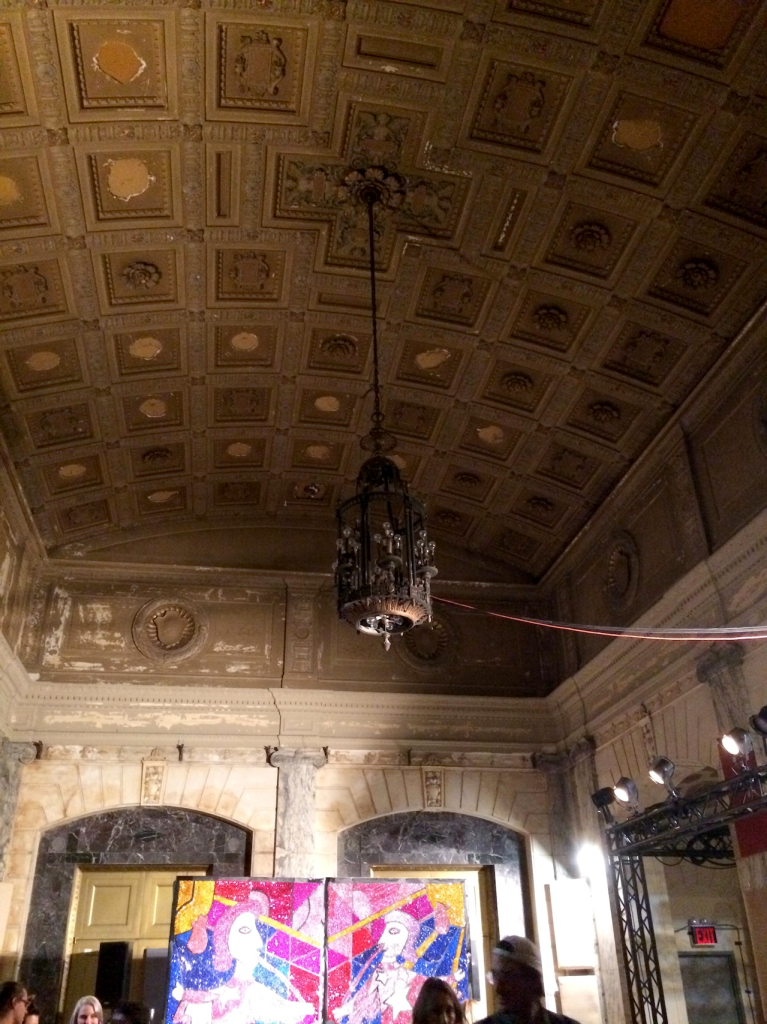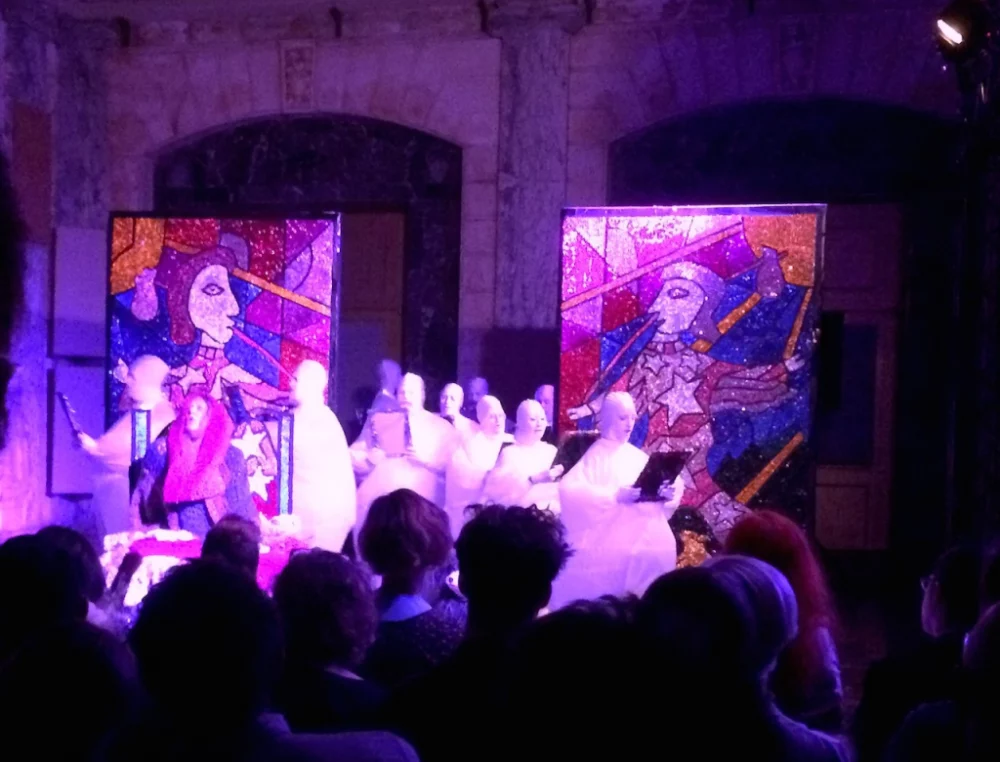
- Source: HYPERALLERGIC
- Author: CHLOE NELSON
- Date: NOVEMBER 18, 2014
- Format: ONLINE
An Opera of Voice, Space, and Place
In a whisper the chorus chants: “Beginning and the end, neither and the otherwise, betwixt and between, the end is the beginning.” These circular and playfully rhythmic lyrics are echoed in droning sound effects and a string section that ebbs and flows into the listener’s consciousness. For artists-in-residence Raúl de Nieves and Colin Self’s The Fool, an opera débuting at Brooklyn’s Issue Project Room, the stage is set for a mystical, cyclical production. The audience expects transformations and a plot thread that will return, somehow, to its starting point. Instead, the audience is given a series of dramatic and despair-filled vignettes highlighting the vocal performance of each cast member.
The staccato choral voices crescendo and then release, all hidden from sight behind an elaborate piece of sequined panel that recalls Niki de Saint Phalle’s shimmering Tarot garden and the surface play of Mickalene Thomas in equal measures.

The visual elements of The Fool are perhaps less flamboyant than one might expect given Colin Self’s involvement with the ritualistic drag performance group Chez Deep and Raúl de Nieves’s theatrical music and clothing embraced by the queer underground and fashion communities alike. The artists have pulled many textures from their toolbox — sequins on the enormous panel and bed (the one set piece), crocheted bedding, inflatable suits, bedazzled mirrors — and yet the element that captures the imagination the most is the air. Issue Project Room features 40-foot ceilings that resonate with song and the vibrations of the performers’ voices.
The Fool brings together glimpses of archetypal characters — Mother, Child, Old Woman, Dog/Fool — in the short production. The four acts, sung and chanted in Spanish and English, each feature one of these archetypes, and rarely do they overlap in their personal journeys. The first two performers are stoic and, in the opera tradition, sing rather than speak. Mehron Abdollmohammadi’s Mother is bearded and braided, and belts her beautiful aria to fill the abundant space left by Issue’s high ceilings. The Child, played by Alexandra Drewchin, is at once a delicate soprano dressed like a character from H.R. Pufnstuf and a moaning, Bjork-like performer. Both are dragged offstage by the frightening, masked Dog/Fool played by de Nieves.
In the second half, the focus shifts to the Old Woman, played by Self, and The Fool in a poetic death scene. In continuing with the time-honored myth of the trickster, The Fool playfully escorts each character to their next life phase. However, what the audience is denied is the lightheartedness promised of a fool. The Dog/Fool character is, ironically, the wisest. It confides in the Old Woman, “Do not be afraid. By giving me a chance to help, you will have me by your side at all times.”

As the chorus chants and enters into view in inflatable white suits, the Old Woman thrashes about and dies in bed, only to be re-birthed as the Child. The plot has completed its cycle. This re-birth scene feels like the only true connection between the end and the beginning. The allegory of this new beginning takes place in a womb-like, ruffled bed reminiscent of seventies performance art à la “Womanhouse” (1972). The real power of the scene is in the hands of the twelve chanting choir members whose suits deflate; they unravel the bedazzled, absurd costumes of the spectacle and finish the opera in their undergarments.
Peeling away the layers of decadent artifice and mysticism that these artists are known for, The Fool predominately features the haunting vocal performances by Abdollmohammadi and Drewchin. “I use music in a very theatrical way,” De Nieves has said. Indeed, the lasting impression for the audience is of the soaring high notes and repetitive chants that resonate throughout the space, which manages to overshadow the sparkling costumes, set design, and loose mystical framework.

